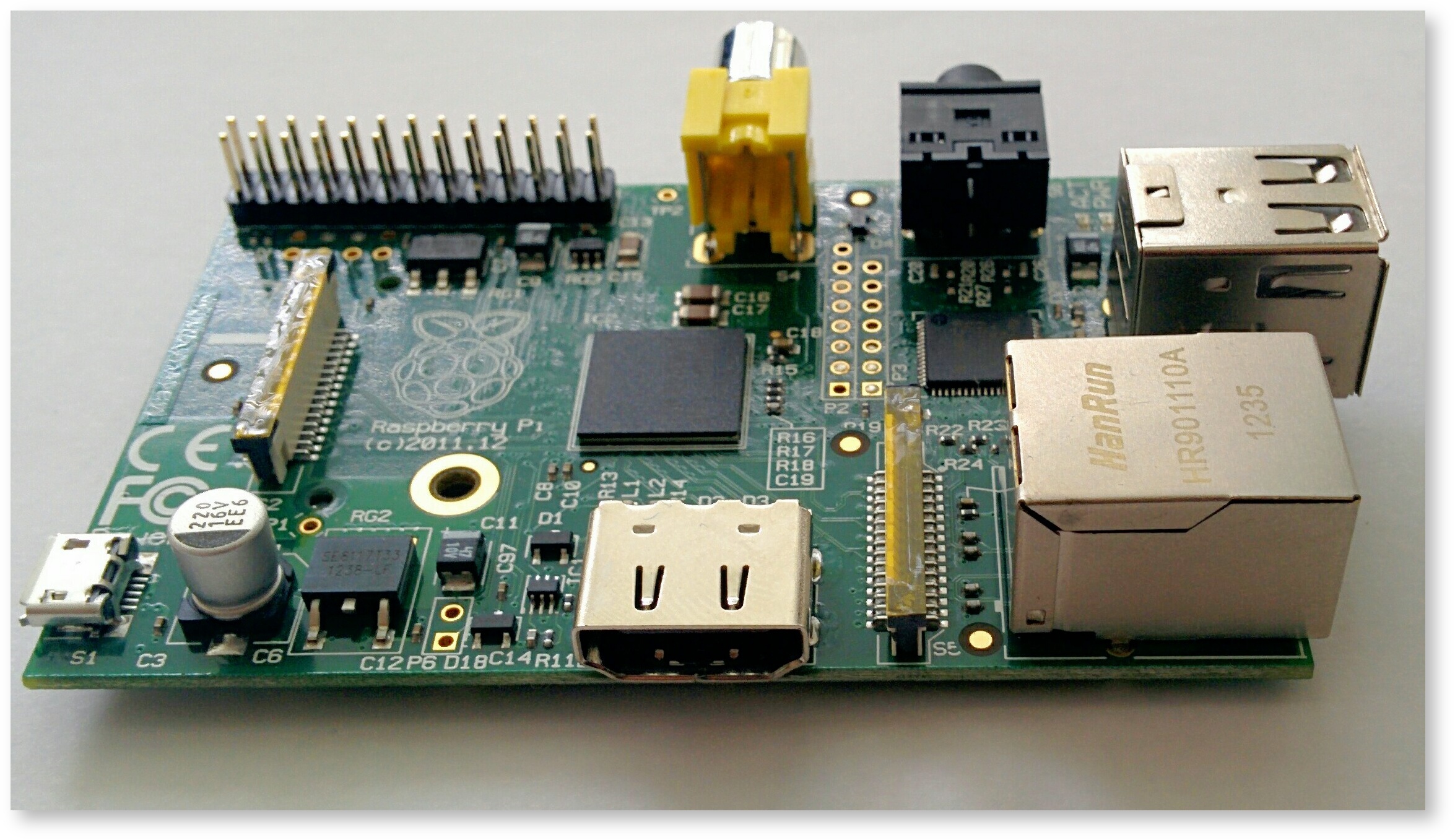...
The Raspberry belongs to Bebo White and it is the version 1 of Raspberry Pi, model B. The cost is about $25/each + costs of the SD card. The Raspberry purchased each has 512MB RAM, on a 700Mhz ARM CPU and a 32GB SD Card ($18) was used. They have 2 USB ports and 1 100Mb/s Ethernet interfaces and 1 HDMI port. For reasons of economy it also does not have a Real Time Clock (RTC). Instead, the Pi is intended to be connected to the Internet via Ethernet or WiFi, updating the time automatically from the global ntp (nework time protocol) servers (see https://learn.adafruit.com/adding-a-real-time-clock-to-raspberry-pi/overview).
The Voltage requirement for the power is 5V+-5%. Keep in mind that it is necessary to have a keyboard, a mouse and a HDMI monitor to do the installation process, but once PingER is working they are not necessary anymore. We measured the power (Wattage) during normal use and it is 2.7 Watts. When using the Dell mouse, with an LED, powered from the Raspberry Pi it crept up to 3.2Watts. If we have a 5000mA-hour fully charged solar cell battery, Then the Raspberry Pi might be expected to run for ~ 25 hours. However we need to be able to recharge from the sun. If we had a 10W 5V solar panel then with an efficiency factor of 2.5 we may estimate the recharge time of the battery as about 6.25hours.
Operating System
The installed system is called Raspbian a Debian Linux variant. The OS had Perl, Make, dig, ping and mail installed. We accessed it through the graphic interface of Raspbian. We just had to install: Apache and XML::Simple.
...
